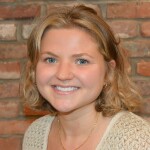Study estimates one in 10 older Americans has dementia

In a new study, researchers from Columbia University estimated that 10 percent of Americans 65 and older have dementia, while 22 percent have mild cognitive impairment.
The study, published in JAMA Neurology, was led by Jennifer Manly, PhD, of the the Gertrude H. Sergievsky Center and the Taub Institute for Research on Alzheimer’s Disease and the Aging Brain at Columbia University in New York City.
Using data from the Health and Retirement Study, which took place between 2016 and 2017, Manly and her colleagues set out to estimate the prevalence of dementia among older Americans. Each participant completed several comprehensive neurological tests and in-depth interviews. Researchers then created an algorithm that diagnosed dementia and cognitive impairment.
Researchers categorized dementia as a set of cognitive difficulties occurring in adulthood that prevent a patient’s ability to independently carry out everyday tasks. Cognitive impairment was characterized as a transitioning between normal aging and dementia.
Of the 3,500 participants, approximately one third of them had some form of cognitive impairment. The study found that dementia rates rose sharply with age. Only three percent of participants aged 65 to 69 had dementia, while 35 percent of people 90 and older qualified for the condition.
Results also indicated that Black and Hispanic Americans were disproportionately burdened by dementia. In addition, those who had less schooling were more likely to suffer from the condition.
“Dementia research in general has largely focused on college-educated people who are racialized as white,” said Manly in a statement. “This study is representative of the population of older adults and includes groups that have been historically excluded from dementia research but are at higher risk of developing cognitive impairment because of structural racism and income inequality. If we’re interested in increasing brain health equity in later life, we need to know where we stand now and where to direct our resources.”









.jpg.homepage-thumbnails.460x320.jpg)










SHARE